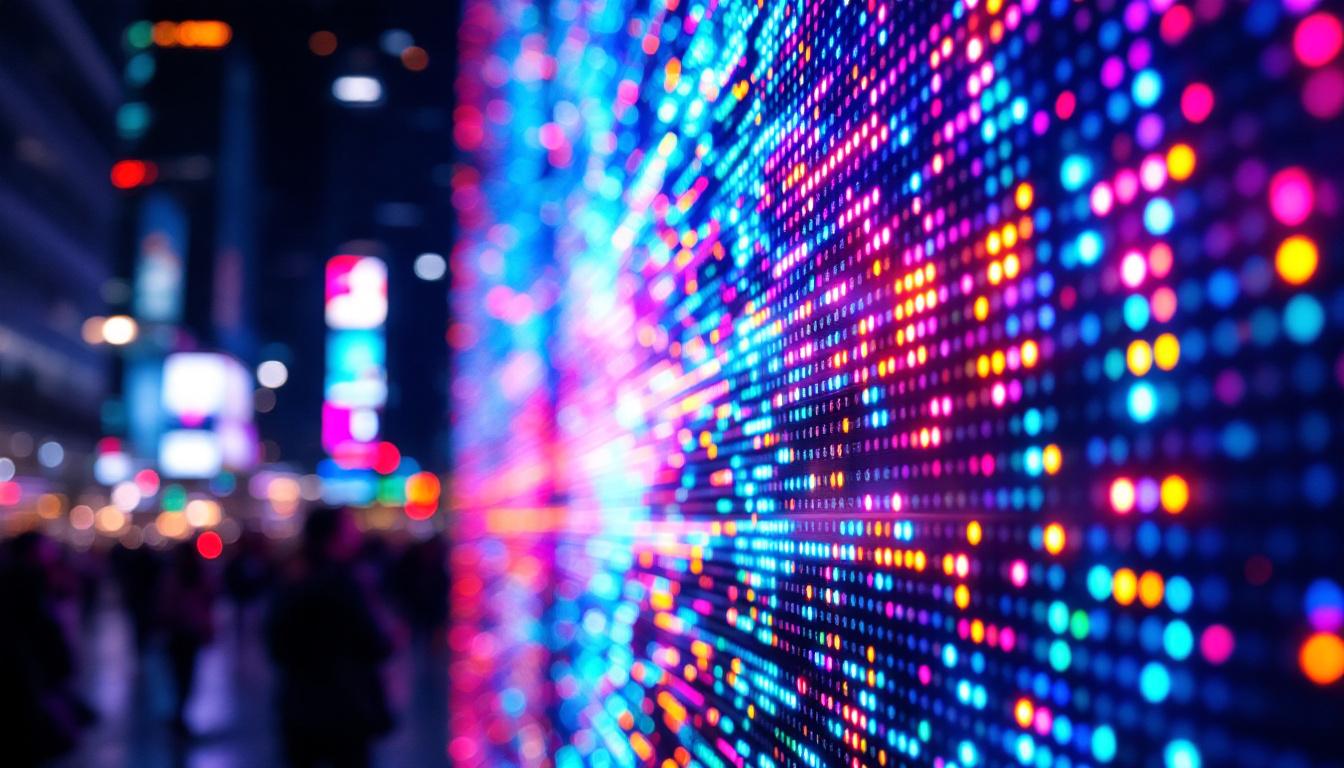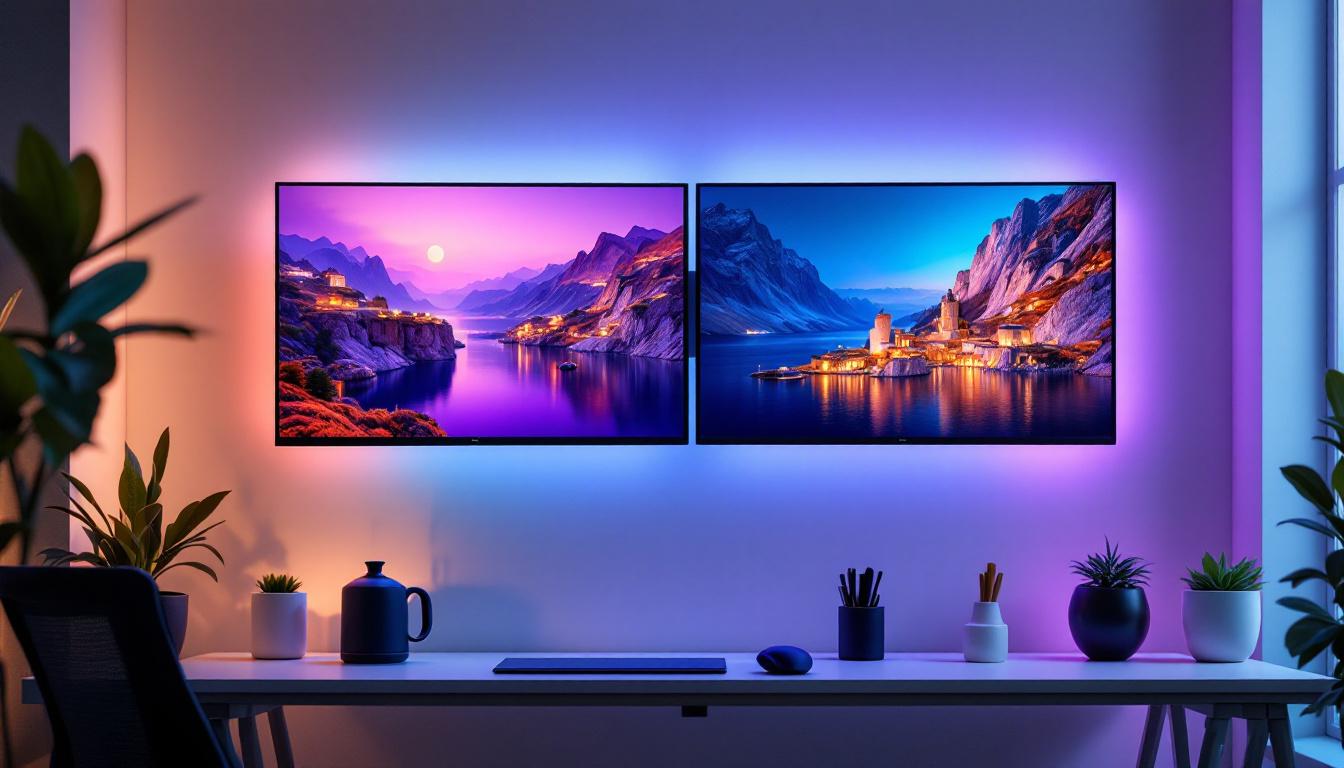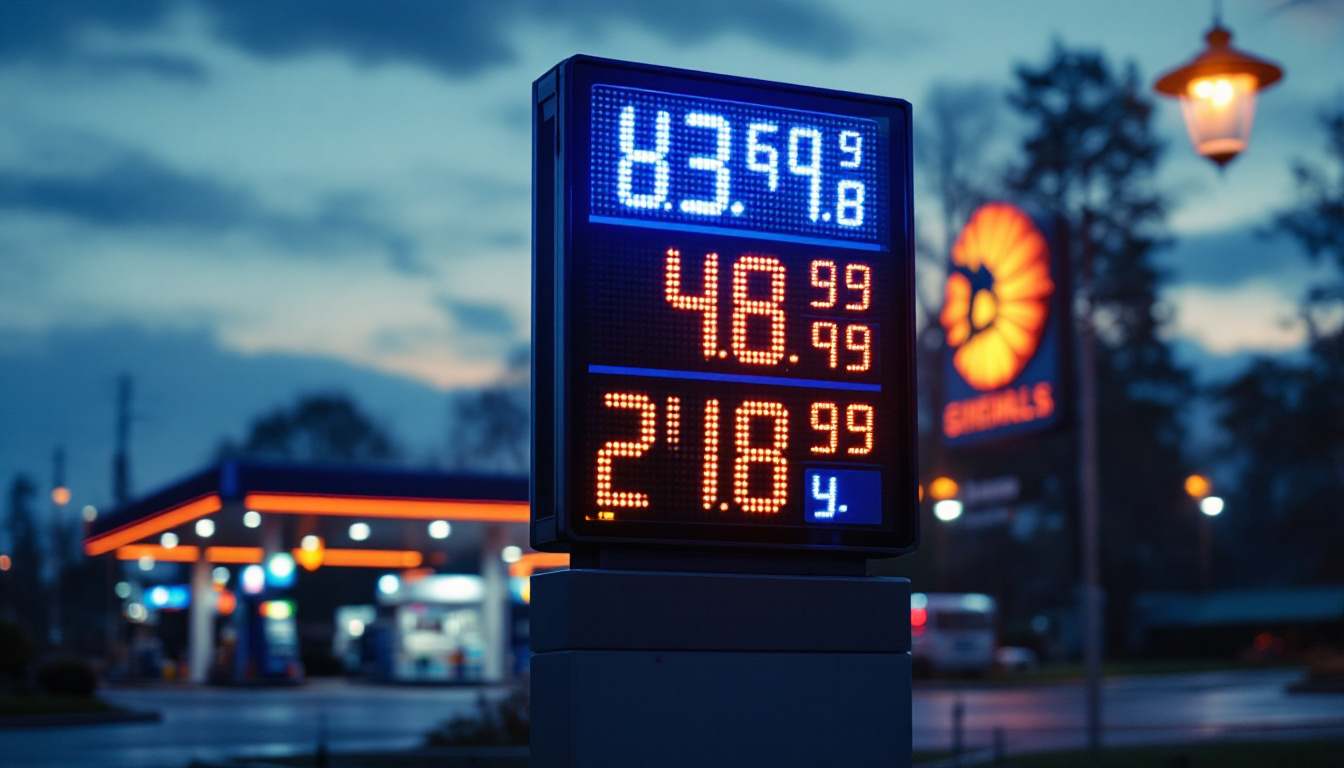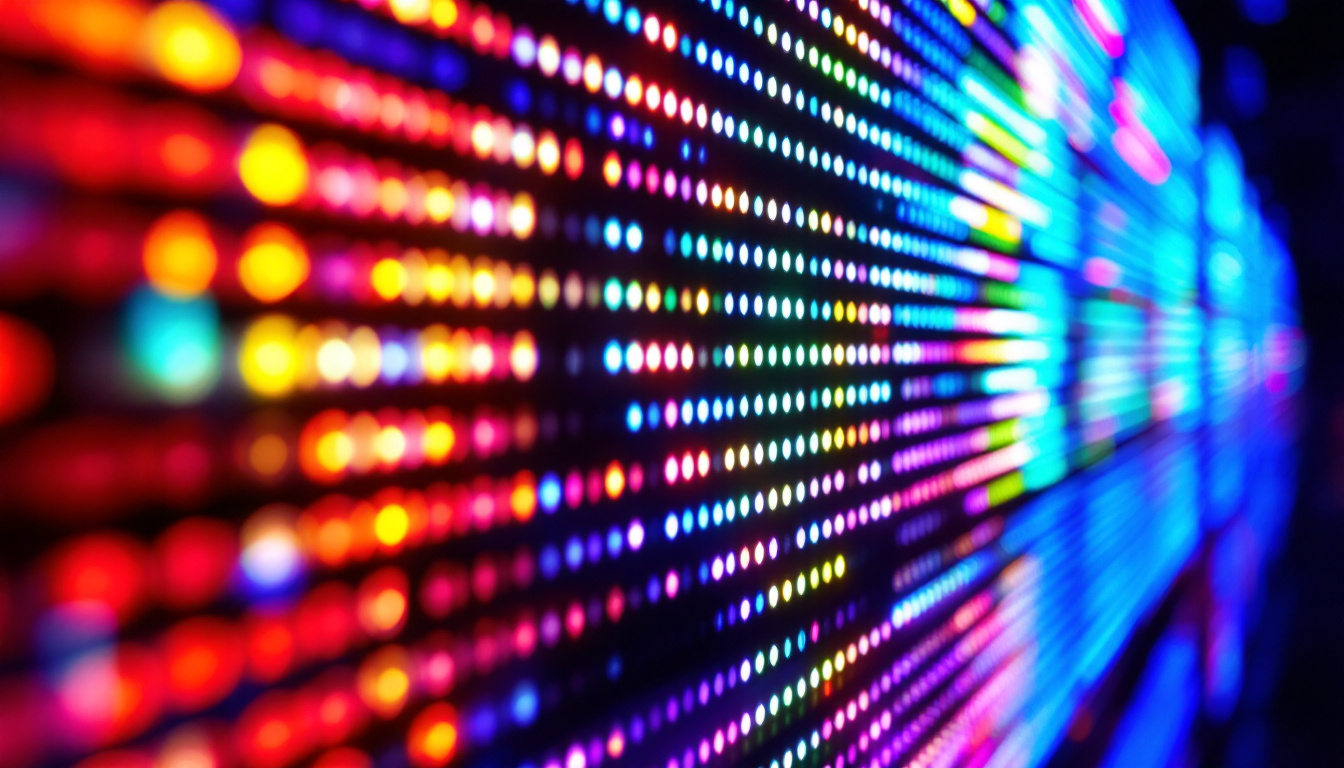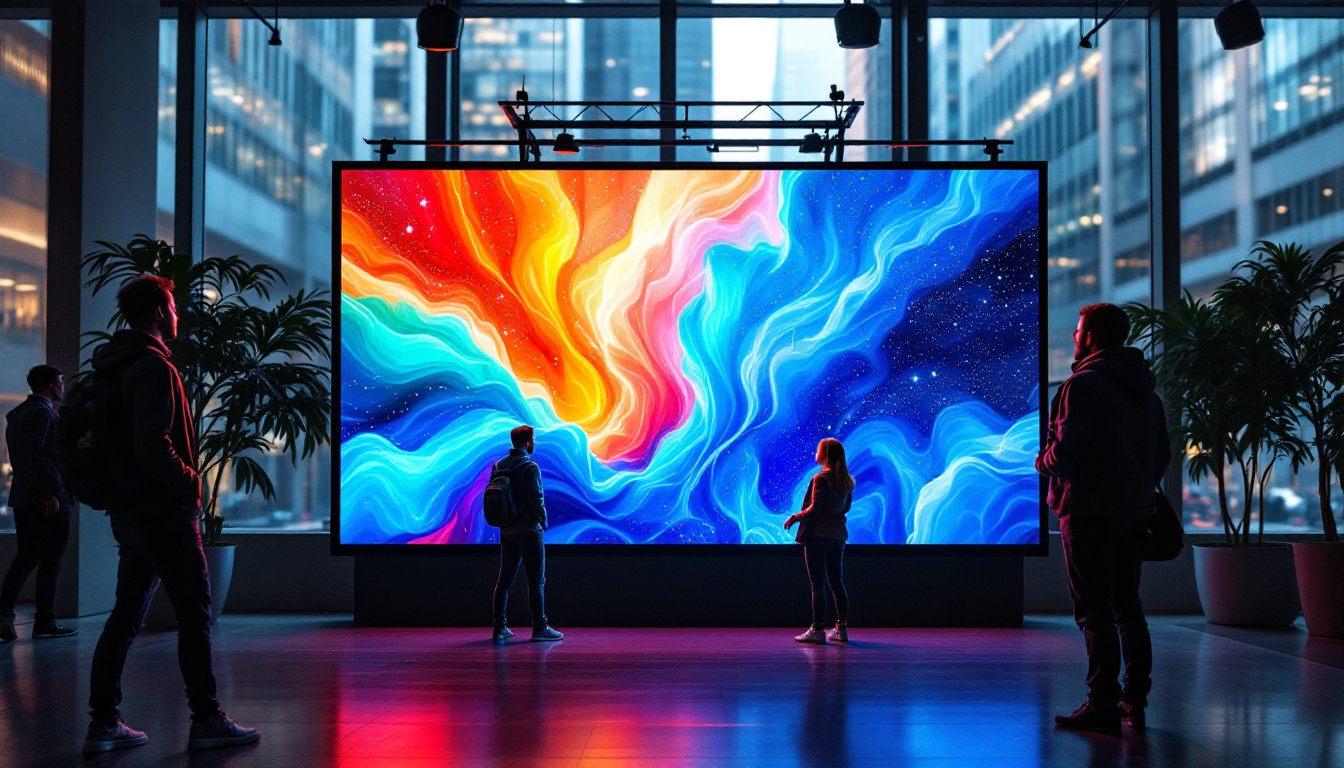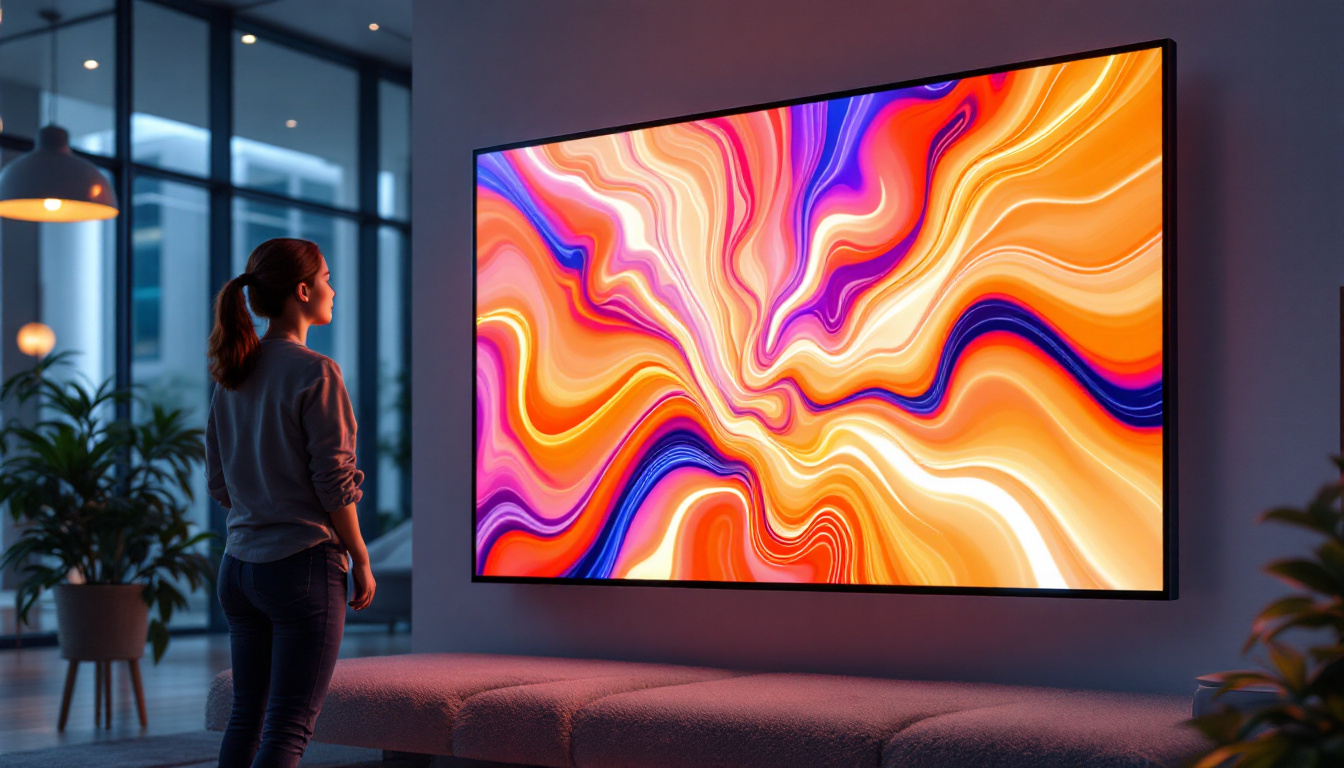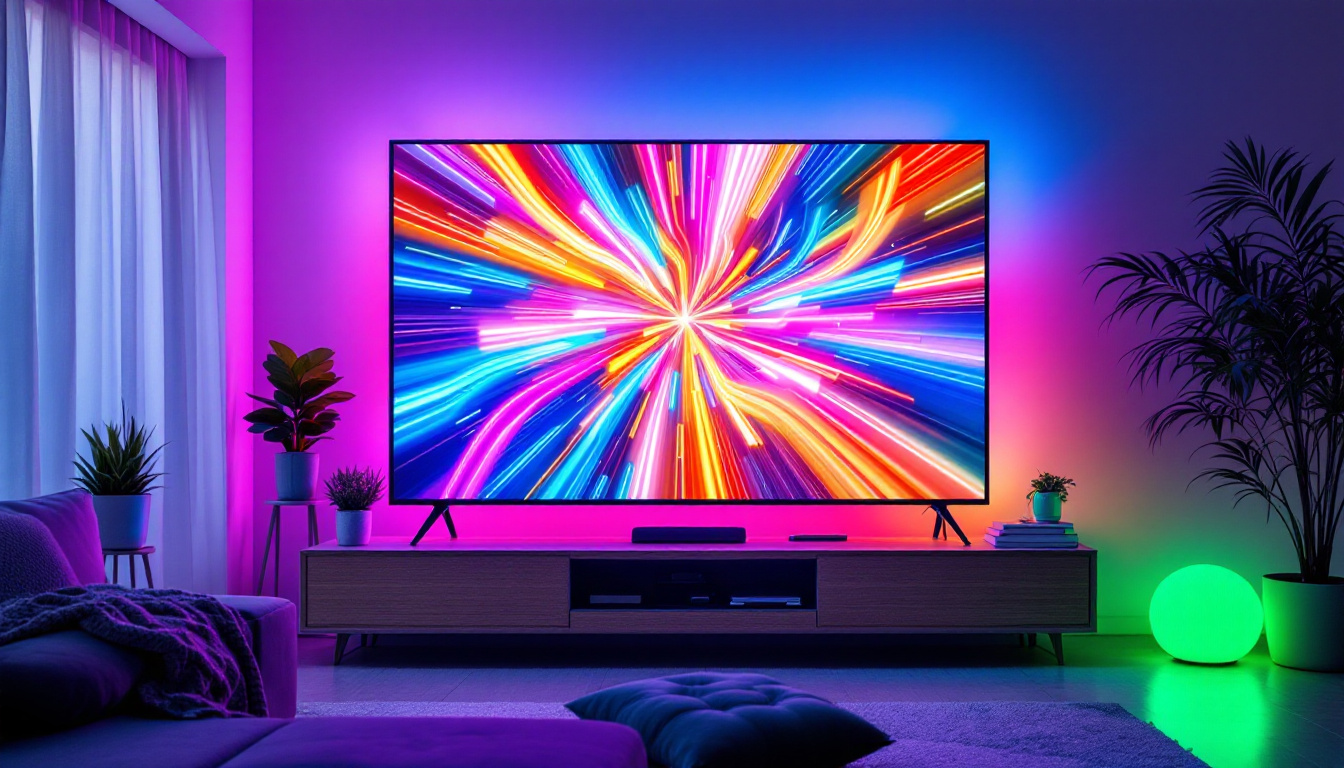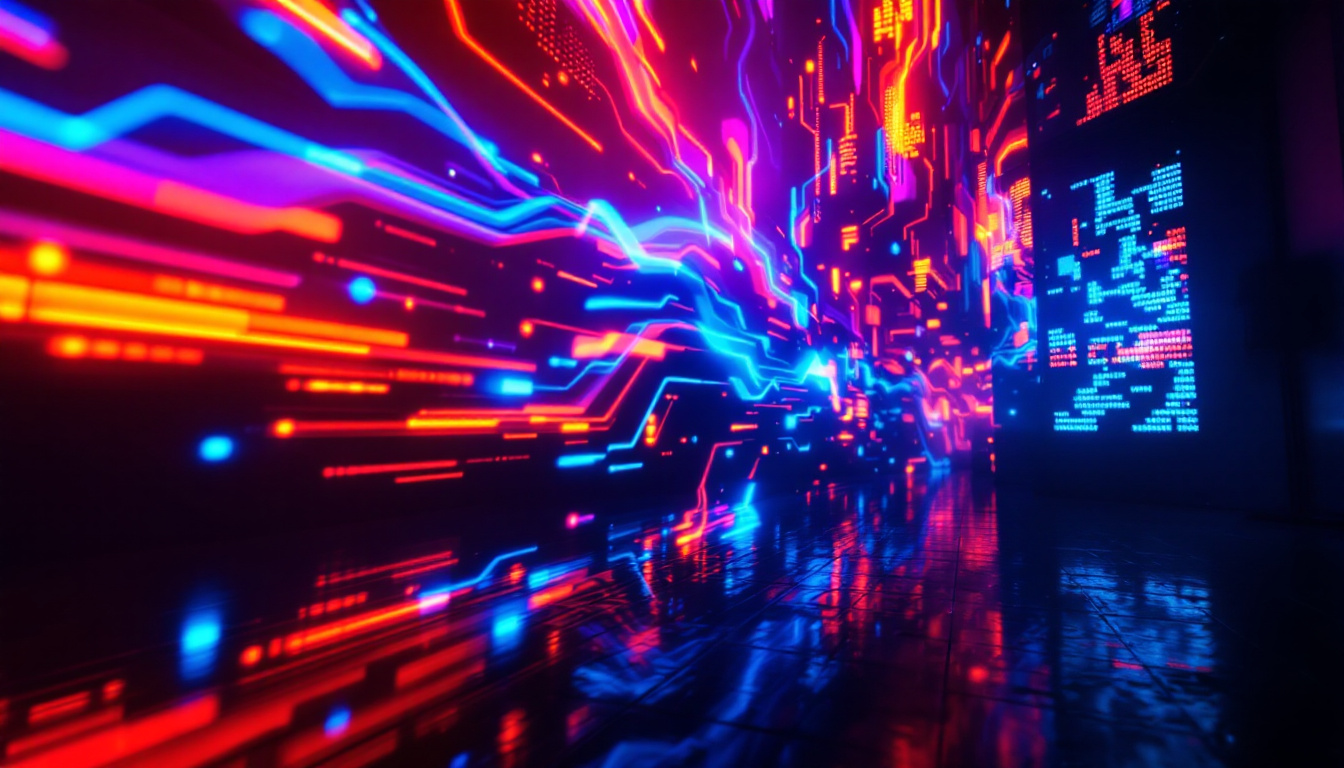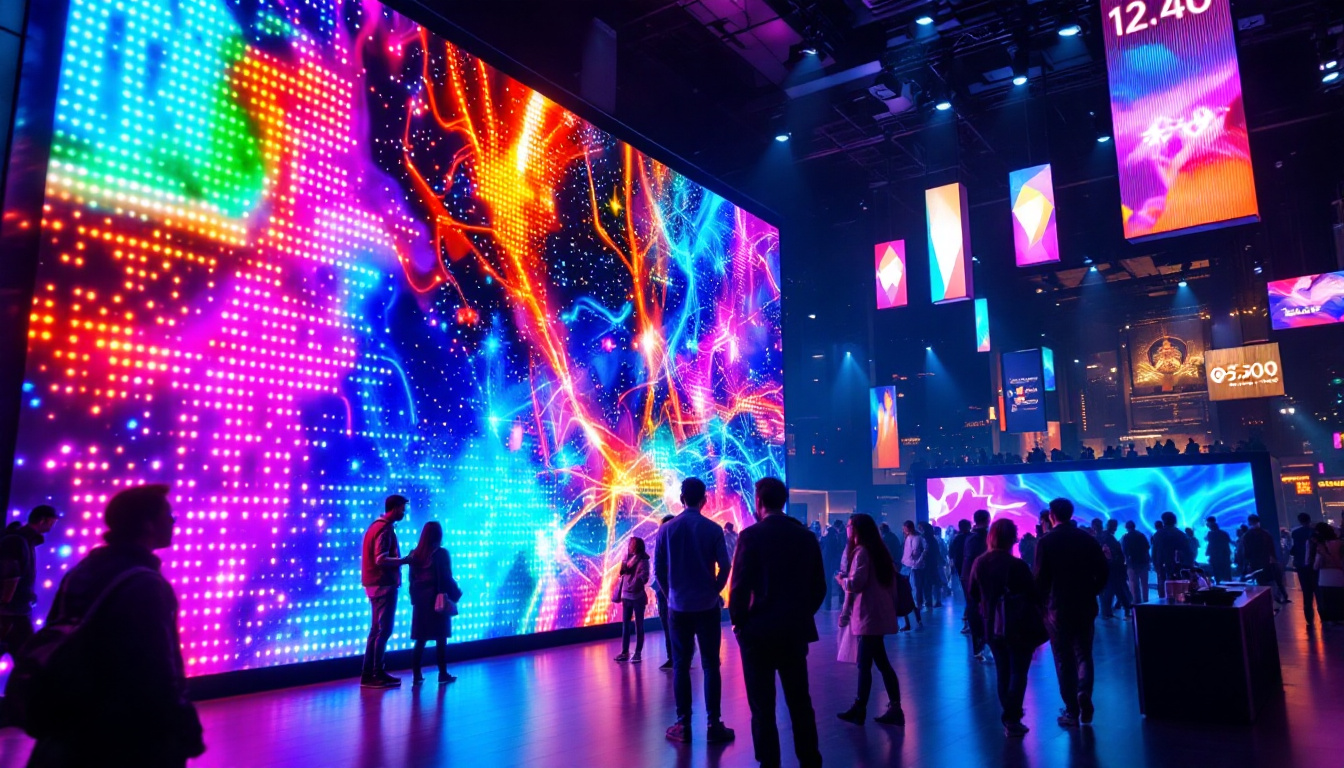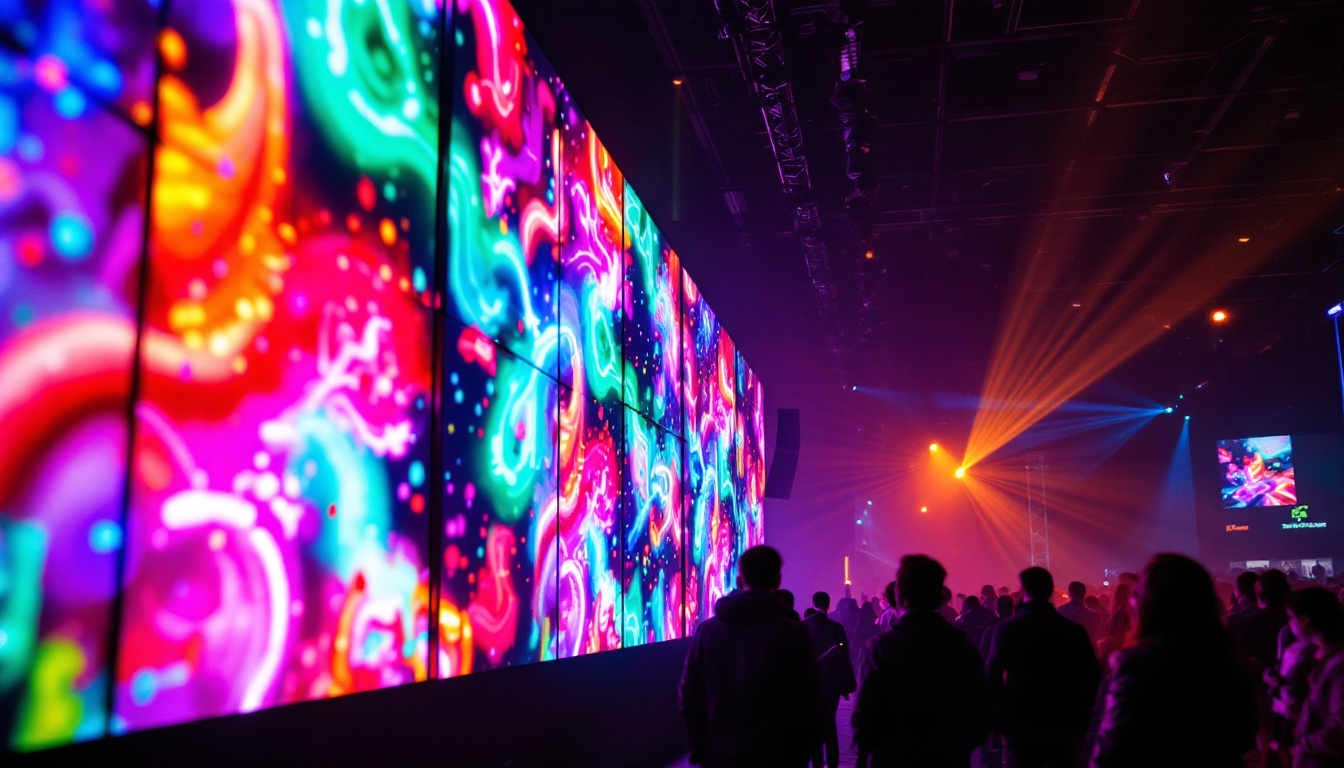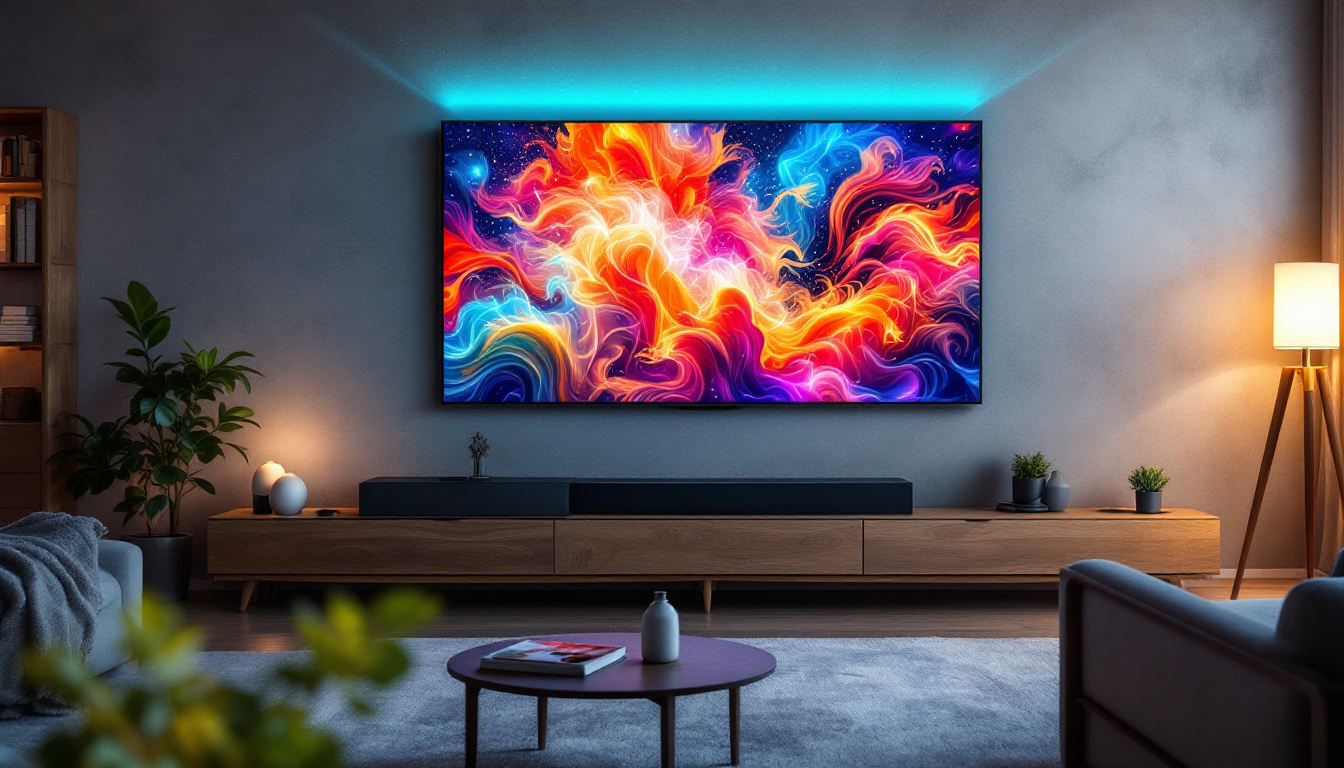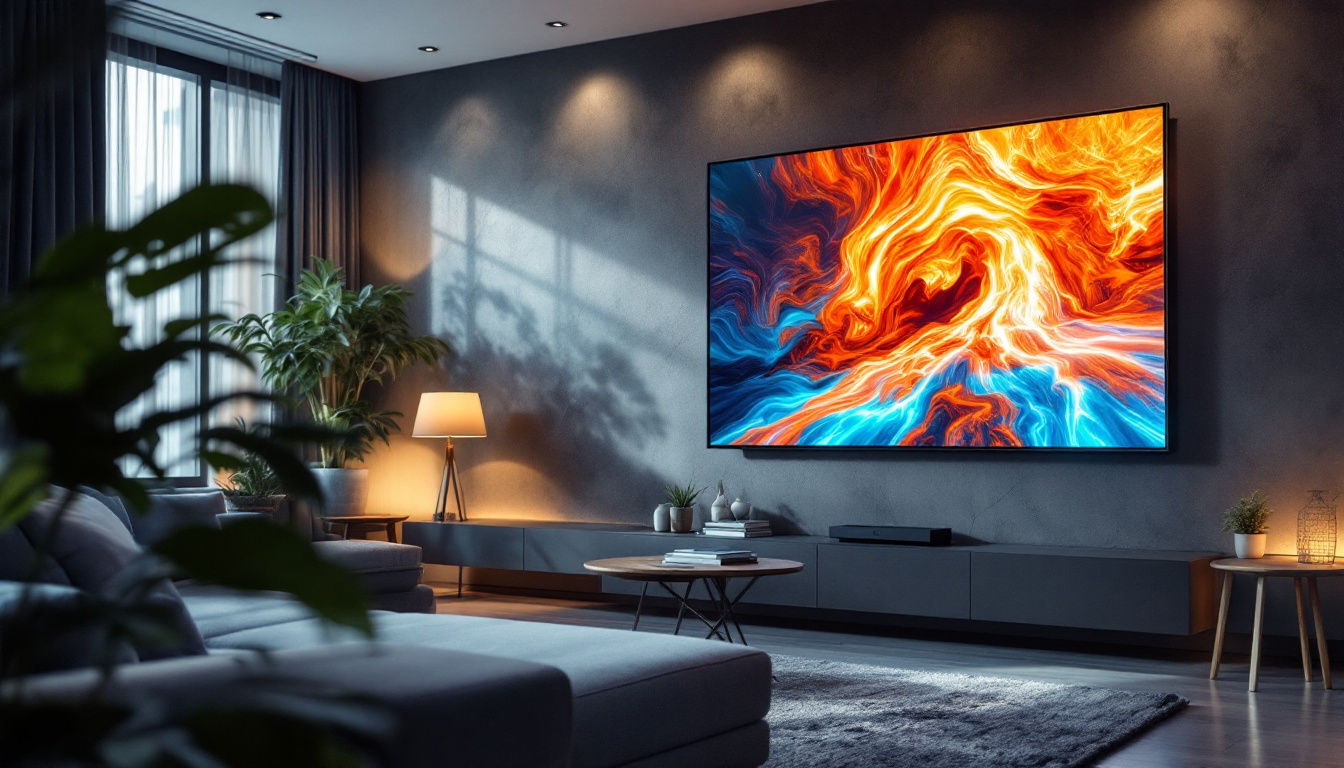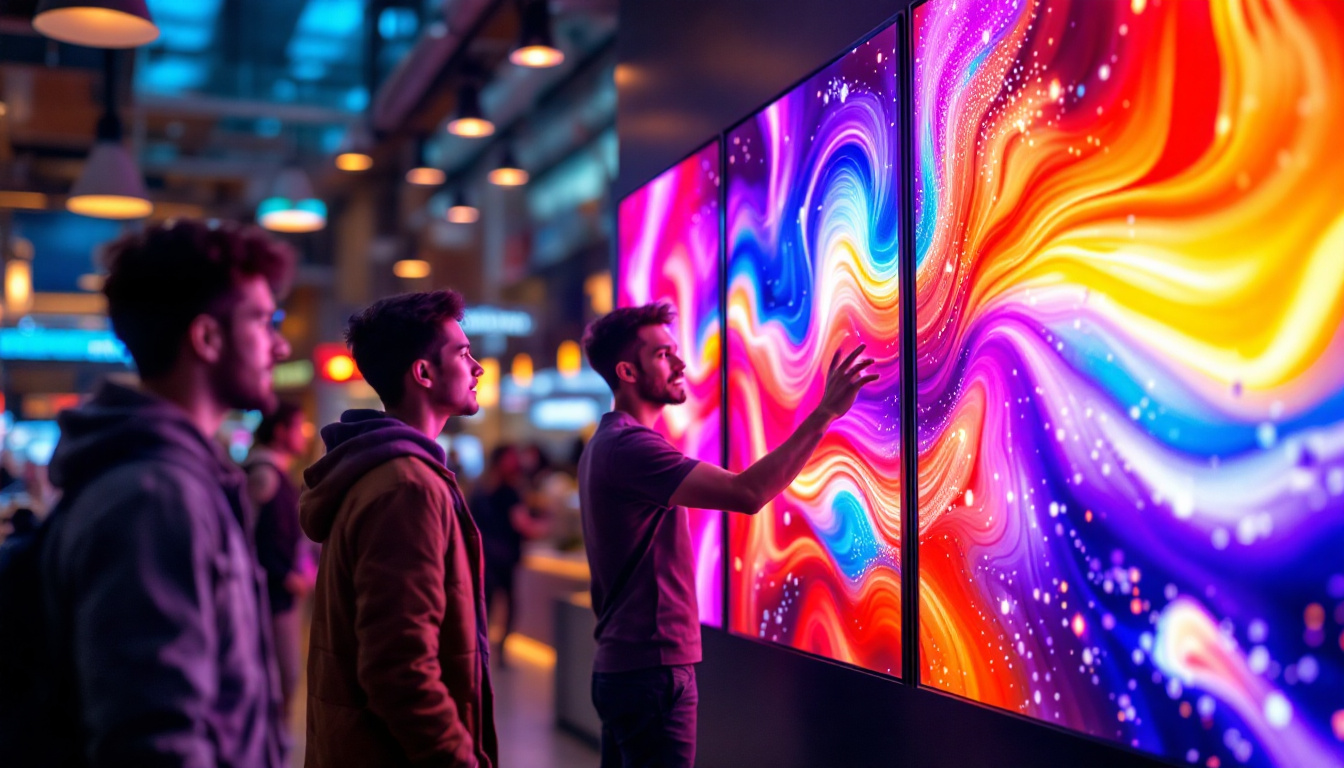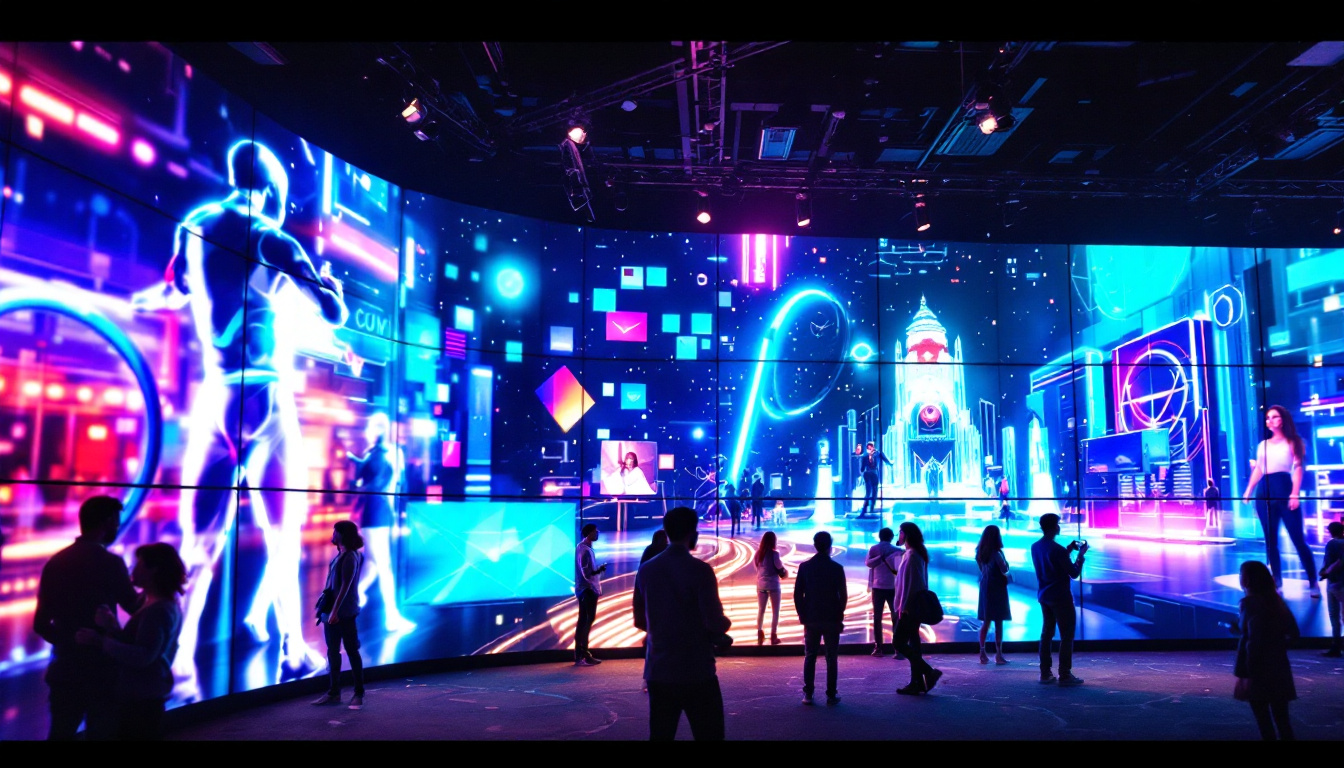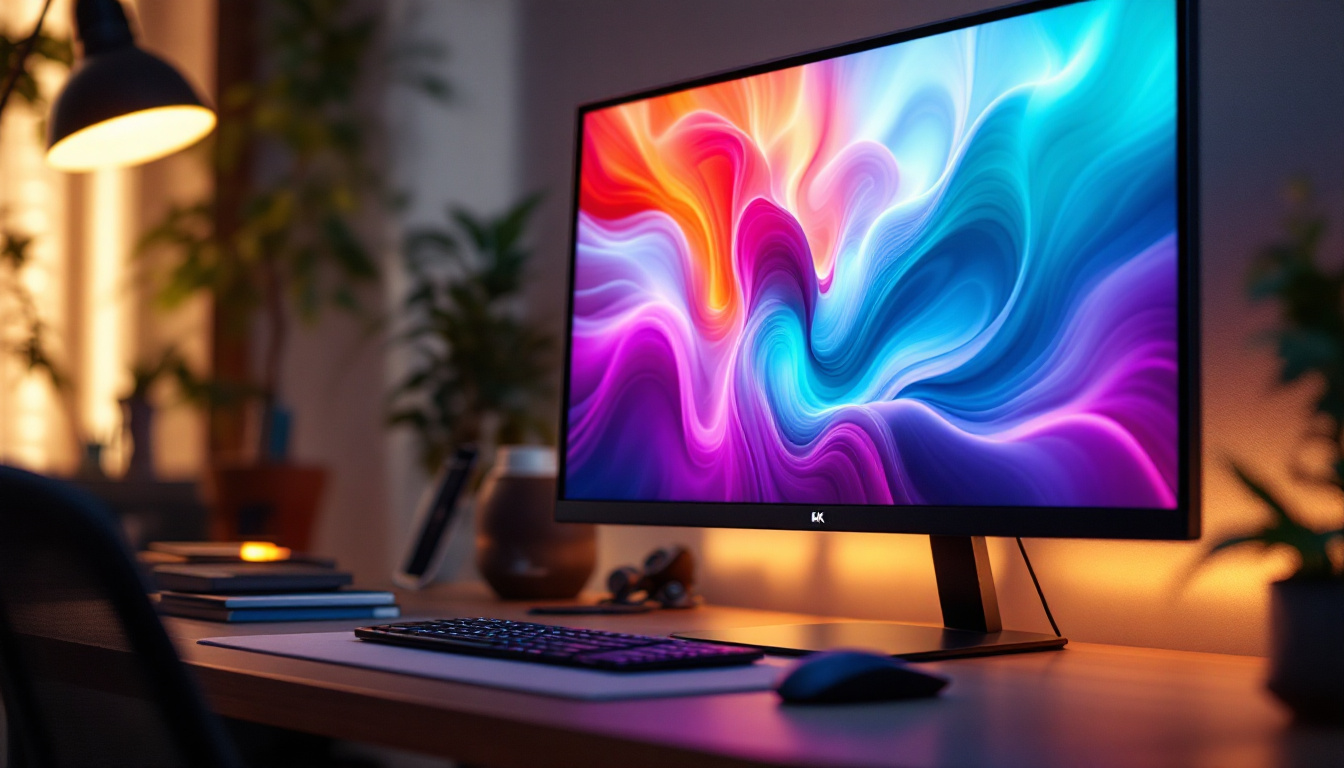In the world of digital signage and display technology, LED displays have become a cornerstone for delivering vibrant, clear, and dynamic visual content. Among the various types of LED displays, the “80 dots” configuration represents a specific pixel arrangement that offers unique advantages and applications. This article delves into what an 80 dots LED display is, how it functions, and why it matters in today’s visual communication landscape.
Understanding LED Displays: The Basics
Light Emitting Diode (LED) displays use tiny light sources called LEDs to create images and videos. Each LED acts as a pixel or part of a pixel, emitting light when an electric current passes through it. Unlike traditional LCDs that rely on backlighting, LED displays produce their own light, resulting in higher brightness and contrast. This self-illuminating property allows for vibrant colors and deeper blacks, making LED displays particularly appealing for environments with varying lighting conditions.
LED displays are widely used in outdoor billboards, stadium screens, traffic signs, and indoor digital signage. Their modular design allows for various configurations, from small indicator panels to massive video walls. The term “dots” in LED displays typically refers to the number of individual LEDs arranged in a matrix to form the display. This versatility makes LED technology suitable for a broad range of applications, from advertising and entertainment to information dissemination and artistic installations.
What Does “80 Dots” Mean?
The phrase “80 dots” in the context of LED displays usually refers to the number of individual LED points arranged horizontally or vertically in a segment of the display. For example, an 80-dot horizontal line means there are 80 LEDs lined up side-by-side. This number can also describe the total count of LEDs in a smaller display panel or module. The spacing between these dots, known as pixel pitch, plays a crucial role in determining the overall resolution and viewing distance of the display, with tighter pixel pitches allowing for clearer images at closer ranges.
In practical terms, an 80 dots LED display could be a simple numeric or alphanumeric sign, often used in applications such as public transport information boards, scoreboards, or small advertising panels. The resolution and clarity of the display depend on how these dots are arranged and controlled. For instance, a display with a higher density of dots can produce more detailed graphics and text, making it suitable for intricate designs or high-definition video content. Additionally, advancements in LED technology, such as the introduction of RGB (Red, Green, Blue) LEDs, have enabled the creation of full-color displays that can showcase a wide spectrum of hues, enhancing the visual experience for viewers.
The Technical Composition of an 80 Dots LED Display
To fully appreciate the capabilities of an 80 dots LED display, it’s important to understand its technical makeup. The core components include the LED matrix, driver circuits, control system, and power supply.
LED Matrix Arrangement
The LED matrix is the grid of LEDs arranged in rows and columns. In an 80 dots display, the matrix might be configured as 80 LEDs in one dimension, combined with a certain number of rows to form the full display. For example, an 80×8 matrix would have 80 LEDs horizontally and 8 vertically, totaling 640 LEDs.
This matrix arrangement determines the resolution and the type of content the display can show. Higher rows and columns mean better image detail and the ability to display more complex graphics or text.
Driver Circuits and Control Systems
Each LED in the matrix requires precise control to turn on or off at the right time and intensity. Driver circuits handle this task by managing the current flow to individual LEDs. Modern LED displays use integrated driver ICs that simplify the control process and support multiplexing techniques to reduce wiring complexity.
The control system, often a microcontroller or specialized processor, sends data signals to the driver circuits. It interprets the input content—such as text, numbers, or animations—and translates it into commands that activate the appropriate LEDs in the matrix.
Power Supply Considerations
Powering an 80 dots LED display requires a stable and efficient power source. LEDs are low-power devices individually, but collectively, especially in larger matrices, they can draw significant current. The power supply must deliver consistent voltage and current to maintain brightness and prevent flickering.
Energy efficiency is also a key factor, particularly for outdoor or continuously operating displays. Advances in LED technology have reduced power consumption while improving luminosity, making LED displays a cost-effective solution for many applications.
Applications of 80 Dots LED Displays
The specific configuration of 80 dots makes these displays ideal for certain niche applications where clarity and compact size are essential. Their versatility allows them to be used in various environments, both indoors and outdoors.
Public Transportation and Information Boards
One of the most common uses of 80 dots LED displays is in public transportation systems. These displays provide real-time information such as route numbers, arrival times, and service alerts. The compact size and clear visibility of 80-dot configurations make them perfect for bus stops, train stations, and subway platforms.
For example, an 80×8 LED matrix can display scrolling text messages or simple graphics that inform passengers efficiently. Their brightness ensures readability even in direct sunlight, which is crucial for outdoor installations.
Scoreboards and Sports Displays
Sports venues often use LED displays to show scores, timers, and player information. An 80 dots LED display can serve as a scoreboard for smaller venues or as part of a larger system in bigger arenas. The ability to display numbers and letters clearly helps keep spectators informed throughout the event.
Additionally, these displays can be programmed to show team logos or sponsor messages during breaks, adding value beyond just scorekeeping.
Retail and Advertising Signage
Retail environments benefit from LED displays that attract attention and convey promotional messages. An 80 dots LED display can be integrated into storefronts or indoor kiosks to display prices, discounts, or product information. Their dynamic nature allows for easy updates and customization, unlike static printed signs.
Small businesses often choose these displays for their affordability and ease of installation, leveraging bright, eye-catching visuals to enhance customer engagement.
Advantages of 80 Dots LED Displays
Choosing an 80 dots LED display comes with several benefits that make it a practical choice for many applications.
High Visibility and Brightness
LED technology inherently offers superior brightness compared to other display types. An 80 dots LED display can be easily seen from a distance, even under harsh lighting conditions. This makes it ideal for outdoor use where sunlight can wash out less bright screens.
Energy Efficiency and Longevity
LEDs consume less power than traditional incandescent or fluorescent lights, translating to lower operating costs. Additionally, LEDs have a long lifespan—often exceeding 50,000 hours—reducing maintenance and replacement expenses.
Compact and Flexible Design
The modular nature of LED displays allows for compact designs like the 80 dots configuration. This flexibility enables integration into various environments without requiring large installation spaces. Furthermore, the display can be customized in size and shape to meet specific needs.
Dynamic Content Capability
Unlike static signs, LED displays can show changing content, including text, animations, and simple graphics. This dynamic capability enhances communication effectiveness and allows for timely updates, which is particularly valuable in transportation and retail sectors.
Challenges and Considerations
While 80 dots LED displays offer many advantages, there are also challenges and factors to consider before implementation.
Resolution Limitations
With only 80 dots in one dimension, the resolution is relatively low compared to high-definition screens. This limits the complexity of images and the amount of information that can be displayed clearly. For applications requiring detailed graphics or video playback, larger or higher-resolution displays are necessary.
Viewing Angle and Distance
The optimal viewing distance for an 80 dots LED display depends on the pixel pitch—the distance between individual LEDs. If the display is viewed too closely, the pixel structure may become visible, reducing image quality. Conversely, from too far away, small text or details may be hard to read.
Designers must balance pixel pitch and display size to suit the intended viewing environment.
Environmental Durability
Outdoor LED displays must withstand weather conditions such as rain, dust, and temperature fluctuations. While many LED modules are designed with protective enclosures, ensuring proper sealing and ventilation is critical to maintain performance and longevity.
Future Trends in LED Display Technology
The LED display industry is evolving rapidly, with innovations that will enhance the capabilities of configurations like the 80 dots display.
Miniaturization and Higher Resolution
Advances in LED manufacturing have led to smaller LED chips and tighter pixel pitches. This trend allows for higher resolution displays within the same physical size, meaning future 80 dots displays could deliver sharper images and more detailed content.
Smart Integration and Connectivity
Modern LED displays are increasingly integrated with IoT (Internet of Things) technology, enabling remote management, real-time updates, and data-driven content customization. This connectivity enhances the usefulness of LED displays in dynamic environments such as smart cities and interactive retail spaces.
Energy Harvesting and Sustainability
With growing emphasis on sustainability, LED displays are being designed to incorporate energy harvesting technologies like solar panels. This approach can reduce reliance on external power sources, making outdoor LED signage more environmentally friendly and cost-effective.
Conclusion
The 80 dots LED display represents a versatile and effective solution for various digital signage needs. Its balance of size, brightness, and dynamic content capability makes it suitable for public transportation, sports venues, retail environments, and more. While it has limitations in resolution and complexity, ongoing technological advancements promise to expand its potential further.
Understanding the technical aspects, applications, and future trends of 80 dots LED displays helps businesses and organizations make informed decisions about their digital communication strategies. As LED technology continues to evolve, these displays will remain a vital tool in delivering clear, engaging, and impactful visual messages.
Discover LumenMatrix’s Advanced LED Display Solutions
Ready to elevate your visual communication with high-quality LED displays? LumenMatrix, a pioneer in LED display technology, offers a comprehensive range of products that cater to your unique needs. From vibrant Indoor and Outdoor LED Wall Displays to innovative solutions like Vehicle LED Displays, LED Posters, and LED Sports Displays, our offerings are designed to captivate and engage your audience. Experience the future of digital signage with our Floor LED Displays, Custom LED Configurations, All-in-One, and Transparent LED Displays. Embrace the power of LumenMatrix and transform your space with our cutting-edge LED solutions. Check out LumenMatrix LED Display Solutions today and start creating unforgettable visual experiences.

